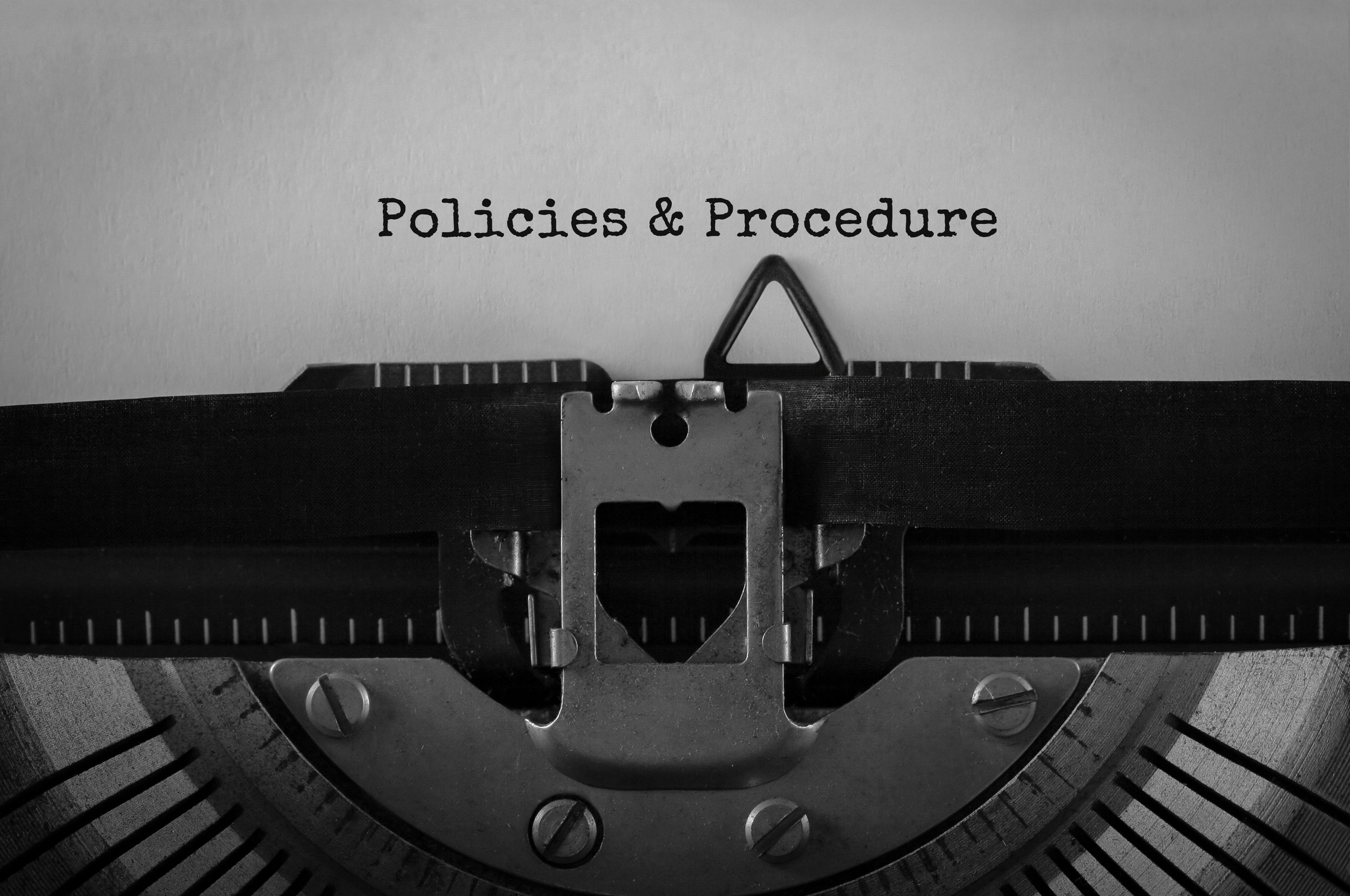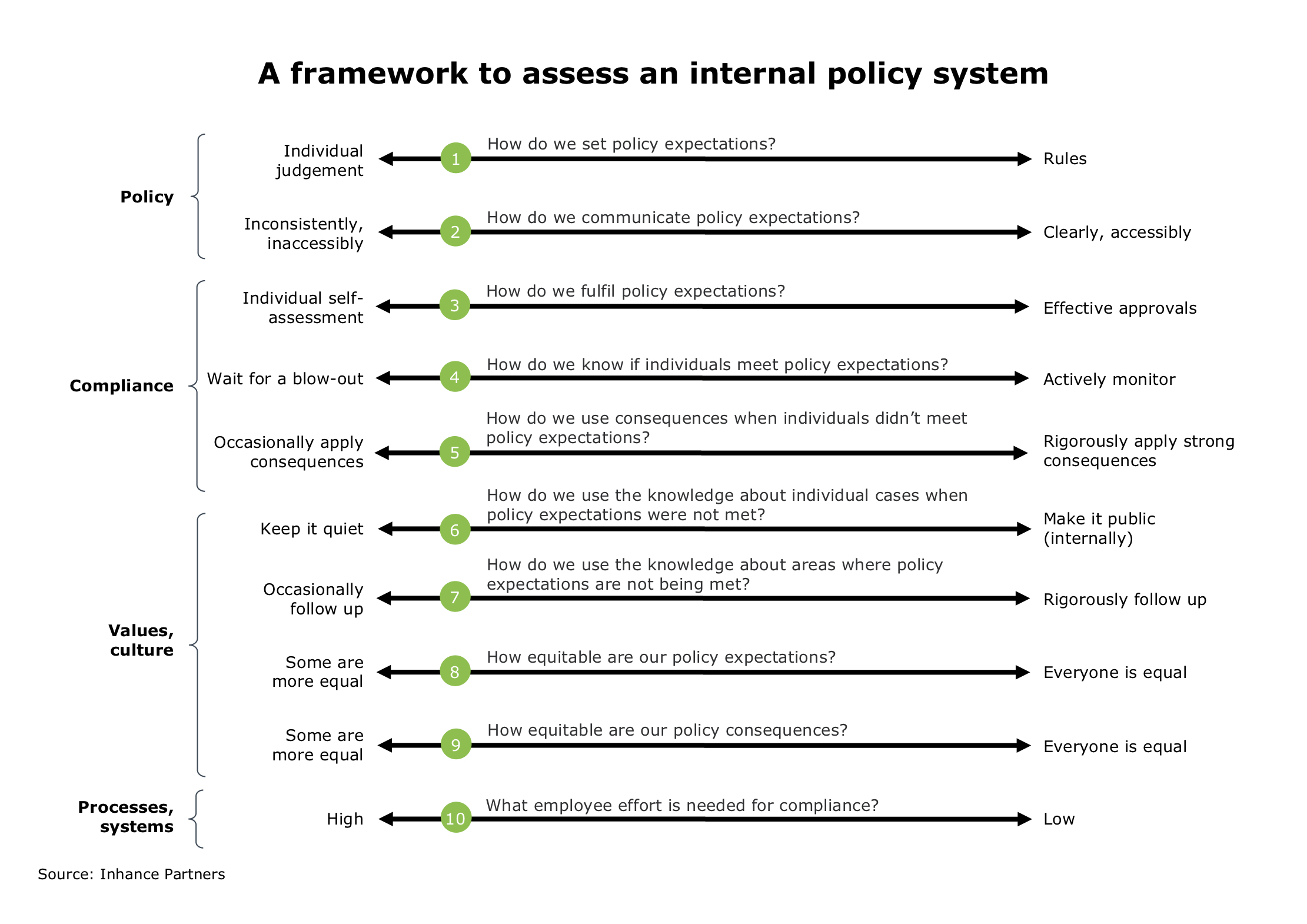Breaking Internal Policy Shackles – In a Controlled Way
How to evaluate and realign policies that hinder engagement, innovation and change
By Matthew Rogozinski
Like many others, your business may be moving to an agile organisation model to foster innovation and the ability to thrive in a fast-changing world. But how well aligned are your internal policies (work expenses, procurement, vendor engagement, staff relocation and the like) with the model being created?
These policies can be a source of discontent, even without the challenge of moving to a new organisation model. How often, for example, have you heard colleagues expressing frustration with the time they believe they waste trying to meet certain policy requirements? And have you found that moving the needle of employee engagement is slow and difficult despite management’s best efforts?
One problem is that a business’s internal policies may be longstanding and originally developed for a different competitive environment and workforce profile. Multiple business functions may contribute to their maintenance and, in attempting to deal with all possible situations, they have become complex and highly cross-referenced. Exacerbating the problem, escalation protocols are often unclear and involve different processes and systems across the jurisdictions in which the business operates.
We encounter these kinds of problems and resulting dissatisfaction with internal policies in organisations of all kinds. This dissatisfaction is often raised in feedback sessions and engagement surveys, where employees complain about inconsistent interpretations of policies, cumbersome processes, and the multiple approvals required for what they believe are minor requests. Importantly, employees often interpret these issues as a lack of trust in their ability or willingness to do the right thing.
Business leaders who can turn this around demonstrate their genuine commitment to what might otherwise be seen as ‘lip service’ values, like ‘hiring and retaining the best people’ and ‘supporting each other to do the best we can’. By better aligning internal policies with values, these leaders positively contribute to staff engagement, productivity, innovation and agility.
However, internal policies are rarely the subject of management attention. They typically operate in the background, coming into prominence only when a material risk to the business occurs. The result is often a swing of the pendulum to a more punitive, top-down policy setting in one area, when what might be needed is a back-to-the-drawing-board look at the whole set of internal policies to understand if and how they support strategic and operational objectives.
In addition, a closer look at the operational aspects of internal policies often shows that controls are not as tight as management believes they are, despite the bureaucratic burden. In our experience it is possible to reduce the bureaucracy while strengthening controls, and to do so without a cost or risk blowout.
So, how can we break the shackles of cumbersome, out-dated internal policies in a controlled way, so the end result is a coherent set that supports and fosters the culture and values your business is striving to develop or preserve? The first step is to understand your current state. The next is to determine the gap between that and where you need or want to be. Only then can you put a disciplined program of work in place to ensure your internal policies are consistent in their formulation and operation, and promote rather than hinder employee engagement.
The framework in the exhibit below is a useful starting point. Where along each continuum do internal policies and their operations sit? Is this the right place, bearing in mind the strategic and operational objectives for the business? If not, how big is the gap to the ideal position? If the gap is significant, what kind of effort and risk would be involved in closing it? If that appears too big a mountain to climb in the short to medium term and the policies are doing the job they were designed to do, are there tweaks available that would ease some employee frustration? And so on.
Our participative problem-solving approach is particularly useful in this area. We put the employee at the centre, designing the desired employee experience then building a principle-based system around it (our technique is outlined in the Cut-through to Break Through article).
If you are interested in knowing more about this approach to simplifying and realigning your internal policies, please contact Inhance Partners.


